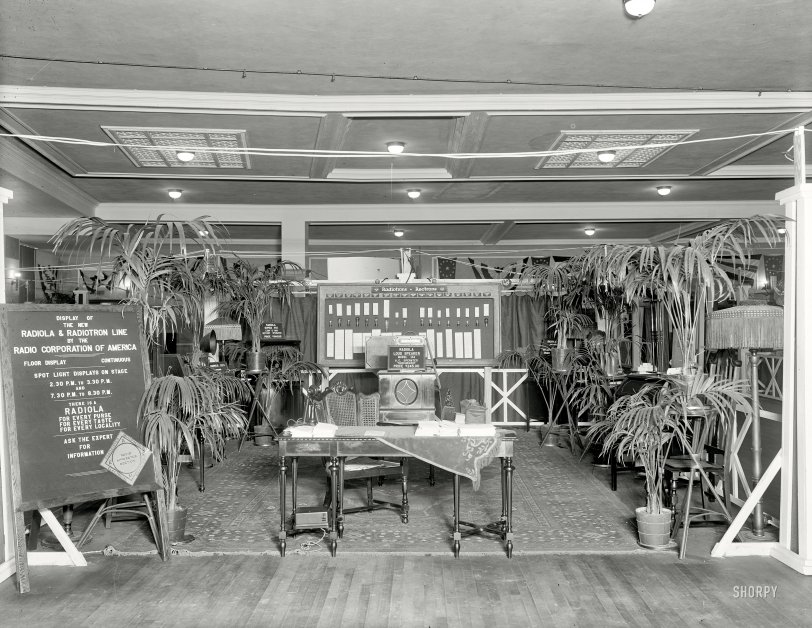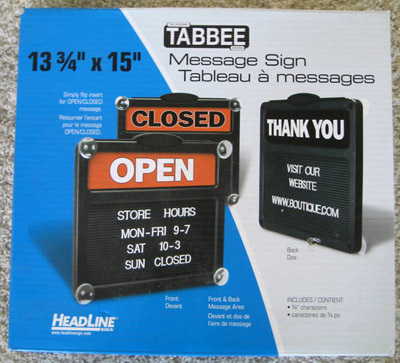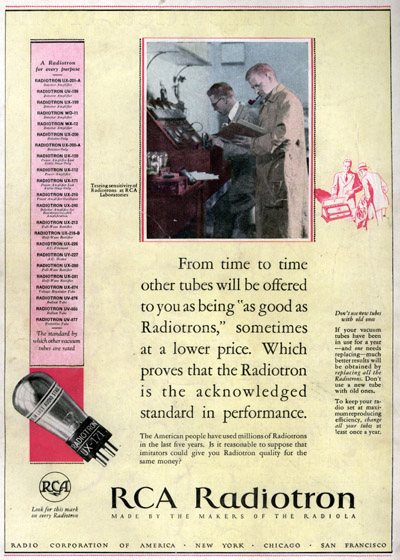


Framed or unframed, desk size to sofa size, printed by us in Arizona and Alabama since 2007. Explore now.
Shorpy is funded by you. Patreon contributors get an ad-free experience.
Learn more.

- Texas Flyer wanted
- Just a Year Too Soon
- WWII -- Replacing men with women at the railroad crossing.
- Yes, Icing
- You kids drive me nuts!
- NOT An Easy Job
- I wonder
- Just add window boxes
- Icing Platform?
- Indiana Harbor Belt abides
- Freezing haze
- Corrections (for those who care)
- C&NW at Nelson
- Fallen Flags
- A dangerous job made worse
- Water Stop
- Passenger trains have right of way over freights?
- Coal
- Never ceases to amaze me.
- Still chuggin' (in model form)
- Great shot
- Westerly Breeze
- For the men, a trapeze
- Tickled
- Sense of loneliness ...
- 2 cents
- Charm City
- What an Outrage
- Brighton Park
- Catenary Supports
Print Emporium
A Radiola for Every Purse: 1925

Washington, D.C., circa 1925. "Radio Corporation of America, exhibit." Planted amid the palms: the RCA Radiola 104, Radiola Super VIII and Radiola IIIA, and an assortment of Radiotron tubes. Harris & Ewing glass negative. View full size.
Chattel Mortgages
I have a copy of a chattel mortgage my grandparents took out in the 1930s from a finance company. It was only for a couple of hundred hundred dollars, but for collateral they had to list all of their furniture, Victrola, radio and car.
The Payment Plan
Most people in the 20s, 30s and 40s were able to buy these "big ticket" items only on a payment plan.
My grandparents were still making payments on their Crosley radio/phono combo from the 1930s through the late 1940s.
Antennas
Notice the loop antennas arrayed in the upper background.
Radiola 33
My parents had a Radiola 33 in 1929. I doubt that they had even seen many $100 bills. My dad worked in a steel mill and had not more than one year seniority. I'm trying to relate to the price quotes that I'm seeing here. I don't think it was a gift but can't figure how they could afford it. I pressed my ear to the speaker until into the 1950s. The speaker was not attached and sat on top of the long legged cabinet.
[The Radiola 33 was designed to compete in what RCA called "the lower price range." That low, low price also included "free erection." - Dave]

Tronics
Rectrons were rectifiers that changed wall-outlet alternating current to the direct current needed by the amplifier tubes (Radiotrons).
Both were RCA trade names. Other companies made similar vacuum tubes.
Radiolas for All
They sold TONS of these radios. Today you could find a decent one for less than they sold for back then -- in unadjusted dollars.
Ah, Radiolas
I have a 1928 Radiola 18 and a 1931 Radiola 80. Not only do they work great, but they are beautiful and extremely well made. A lot of that cost back then was for a handmade, solid wood cabinet with brass trim, etc. Plastic boxes made by machines are a whole lot cheaper to produce.
That cord
under the rug is for the telephone. The box on the table stretcher held the ringer assembly.
With a RCA 104 speaker going for the equivalent of $3,000, now I see why so many people made do with a Radiola III and headphones.
Tron I and Tron II
So what's the difference between a "Radiotron" and a "Rectron"?
Frondly remembered
A classic example of the oriental rug & potted palms school of trade show booth design, so popular at the time.
Palmy Days of Radio
Those prices are huge, even without translating them into 21st century dollars. Luckily, you could gin something up with an old oatmeal box and a cat's whisker.
Tabbee feltboard
This type of signboard lettering is known as the Tabbee system. As a kid I used the same to make an introduction and list of characters to be shown in my silent 8mm movies.

Expensive radios!
In 2009, $245 from 1925 was worth:
$3,000 using the Consumer Price Index
$2,510 using the GDP deflator
$10,400 using the unskilled wage
$12,700 using the Production Worker Compensation
$14,500 using the nominal GDP per capita
$38,600 using the relative share of GDP
Not up to code!
Cord under the rug. tsk, tsk
A Very Expensive Speaker!
Yow! The $245 price tag on that "Radiola Loud Speaker," adjusted for inflation, translates into a whopping $2973.28 in 2009 dollars! (Of course, it *is* "A.C. operated throughout"!)
Model 104 speaker
Comparing historical dollar amounts to today is tricky but here are two calculations for the speaker price in today's dollars:
$3,000 using the Consumer Price Index
$2,510 using the GDP deflator
Wow!
After converting the prices on the tubes and accessories to today's money, I never imagines how expensive radio as a hobby was back then! I Actually have a few of the tubes shown here.
Shockingly Expensive
At around $3000 in inflation-adjusted dollars, these beauties probably didn't exactly fly out the door in those days. It would have been a good chunk of many salaries.
Conflict
There seems to be a conflict between the person who decorated the exhibit and the person who wanted to display the Radiolas. The decorator won. Don't they always?
As long as the purse was filled with gold!
Apparently you had to be well-to-do to own a Radiola in 1925. The price tag for the Super VIII was a hefty $340 in 1925 dollars, which equals $4,228 in 2010 spending power, if the CPI inflation calculator on the U.S. Dept. of Labor website is to be believed. Clearly, when it comes to the price of consumer electronics, not to mention the vastly superior technology of today, we currently enjoy an incredible advantage over the consumers of the Roaring Twenties.
Sign system
For no particular good reason, I associated this type of sign system with a later period. Though still produced, it's frequently seen used for directories in the lobbies of older office buildings. Movable white letters are inserted into grooves in the black felt-surface background. These days, the letters are plastic; would it be a good assumption that this was the case in 1925? A cursory search online didn't come up with a name for this system, but it seems like there should be one. Any sign experts out there who can come up with when it was invented, and by whom?

























On Shorpy:
Today’s Top 5